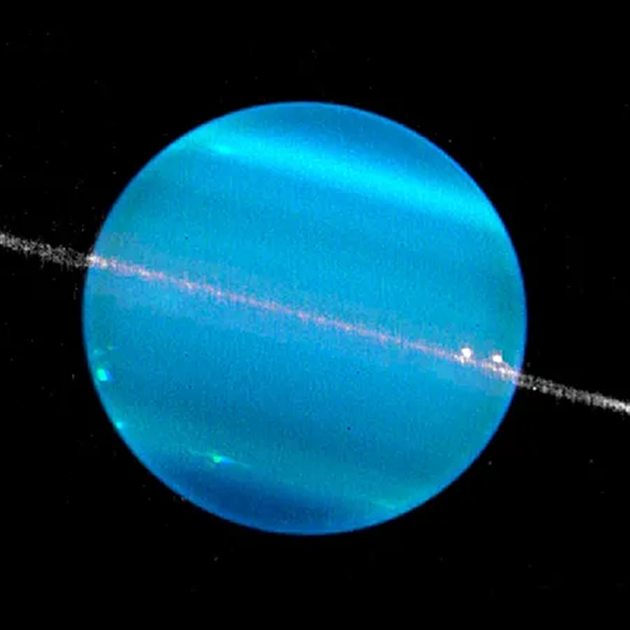Uranus is the second-furthest away planet of the 8 that make our solar system. Making it the 7th planet.

Table of Contents
Remarkable data about Uranus:
| Radius | 25,362 km |
| Mass | 8.681 × 10^25 kg |
| Gravity | 8.87 m/s² |
| Distance from Sun | 2.871 billion km |
| Age | 4.503 billion years |
| Orbital period | 84 years |
| Natural satellites | 27 Miranda, Ariel, Umbriel, Titania, Oberon, Caliban, Sycorax, Prospero, Setebos, Stephano, Trinculo, Francisco, Margaret, Ferdinand, Perdita, Mab, Portia, Rosalind, Cupid, Desdemona, Juliet, Ophelia, Cressida, Bianca, Cordelia, Belinda, Puck |
Key Features of Uranus:
- Ice Giant: Uranus is classified as an “ice giant,” which is distinct from the “gas giants” like Jupiter and Saturn. It has a large core surrounded by a mantle composed primarily of water, ammonia, and methane ices, with a relatively small atmosphere of hydrogen and helium.
- Atmosphere: The atmosphere of Uranus is mostly hydrogen and helium, with traces of methane that give the planet its blue-green color. The methane absorbs red light and reflects blue light, contributing to its distinctive hue.
- Rings: Uranus has a system of rings, although they are much fainter and less prominent than those of Saturn. There are 13 known rings, which are dark and composed of ice and rock particles.
- Magnetic Field: The planet has a tilted and off-center magnetic field, which is unusual compared to other planets. The magnetic field is not aligned with the planet’s rotational axis, adding to the planet’s unique magnetic environment.
- Temperature: Uranus has an average temperature of about -224°C (-371°F), making it one of the coldest planets in the Solar System. Its internal heat source is relatively low compared to other planets, which is part of why it’s so cold.
Uranus Position in the Solar System:
- Orbit: it orbits the Sun at an average distance of about 1.78 billion miles (2.87 billion kilometers). Taking 84 years to complete an orbit around the Sun.
- Rotation and Tilt: it rotates on its axis once every 17.24 hours, creating day and night. The planet is tilted at about 98 degrees, thus its rotational tilt is almost parallel to its orbital plane. For this reason, it experiences extreme seasonal changes. Each pole gets around 42 Earth years of continuous sunlight or darkness during its long orbit around the Sun.
